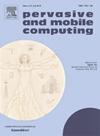无人机交变中继通信系统安全能效优化
IF 3.5
3区 计算机科学
Q2 COMPUTER SCIENCE, INFORMATION SYSTEMS
引用次数: 0
摘要
无人机交替中继通信系统在信息传输领域具有显著的优势,通过两架无人机的协同工作,将信息从发送端高效地传输到接收端,有效地提高了频段利用率。然而,该系统也面临两大挑战:一是由于无人机机载能量有限,如何有效提高能效成为关键问题;其次,在信息传输过程中可能存在恶意窃听者,使得信息安全问题不容忽视。为了解决上述问题,本文探讨了存在窃听者的无人机备用中继通信系统模型。我们的目标是在确保信息安全的同时,通过优化的方式提高系统的能源效率。为此,本文研究了发射功率与无人机轨迹的联合优化问题,以实现系统的安全能效最大化。为了解决这个复杂的优化问题,我们首先将其形式化为一个非凸混合整数非线性分式规划问题。由于直接求解这类问题极具挑战性,我们进一步将其分解为更易于处理的优化子问题,并提出了一组高效的迭代求解方法。仿真实验结果表明,与基线方案相比,本文提出的算法不仅收敛性好,而且显著提高了安全能效。综上所述,本文的研究不仅有效解决了无人机交替中继通信中的能效和信息安全问题,而且通过算法优化提高了系统的整体性能,为相关领域的研究提供了有价值的参考。本文章由计算机程序翻译,如有差异,请以英文原文为准。
Optimization of safety energy efficiency of alternating relay communication systems for UAVs
The UAV alternate relay communication system shows significant advantages in the field of information transmission, as it efficiently transmits information from the sending end to the receiving end through the cooperative work of two UAVs, effectively improving the band utilization. However, this system also faces two major challenges: first, due to the limited energy on-board the UAVs, how to effectively improve the energy efficiency has become a key issue; second, there may be malicious eavesdroppers during the information transmission process, making the information security issue not to be ignored. In order to address the above issues, this paper explores a model for an alternate relay communication system for UAVs in the presence of eavesdroppers. Our aim is to improve the energy efficiency of the system by means of optimization while ensuring information security. To this end, this paper studies the joint optimization problem of the transmit power and the UAV trajectory, aiming to maximize the safety energy efficiency of the system. To solve this complex optimization problem, we first formalize it as a nonconvex mixed integer nonlinear fractional programming (MINLFP) problem. Since it is extremely challenging to solve such a problem directly, we further decompose it into more tractable optimization subproblems and propose a set of efficient iterative methods for solving it. Simulation experimental outcomes indicate that as compared to the baseline scheme, our proposed algorithm not only excels in convergence, but also significantly enhances the safety energy efficiency. In summary, the research in this paper not only proposes an effective solution to the energy efficiency and information security problems in the UAV alternate relay communication as well as improves the overall performance of the system through algorithm optimization, which provides valuable references for research in related fields.
求助全文
通过发布文献求助,成功后即可免费获取论文全文。
去求助
来源期刊

Pervasive and Mobile Computing
COMPUTER SCIENCE, INFORMATION SYSTEMS-TELECOMMUNICATIONS
CiteScore
7.70
自引率
2.30%
发文量
80
审稿时长
68 days
期刊介绍:
As envisioned by Mark Weiser as early as 1991, pervasive computing systems and services have truly become integral parts of our daily lives. Tremendous developments in a multitude of technologies ranging from personalized and embedded smart devices (e.g., smartphones, sensors, wearables, IoTs, etc.) to ubiquitous connectivity, via a variety of wireless mobile communications and cognitive networking infrastructures, to advanced computing techniques (including edge, fog and cloud) and user-friendly middleware services and platforms have significantly contributed to the unprecedented advances in pervasive and mobile computing. Cutting-edge applications and paradigms have evolved, such as cyber-physical systems and smart environments (e.g., smart city, smart energy, smart transportation, smart healthcare, etc.) that also involve human in the loop through social interactions and participatory and/or mobile crowd sensing, for example. The goal of pervasive computing systems is to improve human experience and quality of life, without explicit awareness of the underlying communications and computing technologies.
The Pervasive and Mobile Computing Journal (PMC) is a high-impact, peer-reviewed technical journal that publishes high-quality scientific articles spanning theory and practice, and covering all aspects of pervasive and mobile computing and systems.
 求助内容:
求助内容: 应助结果提醒方式:
应助结果提醒方式:


